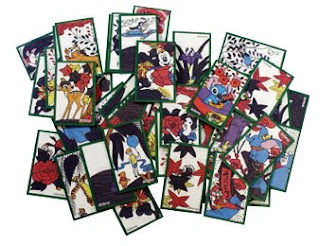The start of the year has certainly been busy and hectic (just how we like it at
Japanese-Games-Shop.com). "Your Man In Japan" has been toiling away the hours on research, purchasing, adding new items to the range, publicizing them, dealing with new orders, packing parcels and hauling them to the post office, once it opened after the winter holidays...
Packing and hauling... packing and hauling... packing and hauling...
This week I have been holding two extended conversations with my suppliers and clients; one about a fine set of Japanese boxwood shogi pieces (report to follow soon), and the other about a new mahjong set that I have just added to my site. One moment I'm getting into the details of how different mahjong sets measure up to each other, and the next I'm admiring some finely crafted Shogi pieces, while trying to work out what my long-suffering supplier is telling me about the craftsman who made the set...
It was a bit of a shock when these pleasant activities were rudely interrupted by the beginning of college term and Your Man In Japan had to turn his attention back to the classroom. Don't get me wrong, I love teaching, but my New Year's Resolution is to take on no more teaching contracts and gradually whittle my teaching schedule down to just a few hours a week so that I can devote myself to my expanding my online activities. The last time I counted, I had five blogs and as many websites up and running and several domain names secured for further expansion... Here's a list of my active websites
Introducing the "Take" Mahjong Set
The mahjong set I have been checking out this week was called to my attention by a player in Holland who wanted to know whether it was as good as it looked. I ordered a set from the supplier and put it through its paces...
 Click the photo to enlarge
Click the photo to enlarge
The "Take" (pronounced "TA-KEH" with the stress on the first syllable) mahjong is a mid-range set which is designed with ease of handling and smooth play in mind.
The Tiles
The tiles are noticably brighter than the standard "off white" colouring so the faces are clear and easy to read. The tiles are also a little bigger than the standard Japanese size, measuring 19mm x 29.5mm x 15mm.
 Click the photo to enlarge
Click the photo to enlargeMahjong manufacturers often design a slight convexity into the back of the tiles and add a "notch" in the sides to represent bamboo. The designers of the Take set have dropped these features in favour of a slightly flatter back which makes for more stable walls! The tiles are also slightly lighter than average.
 Click the photo to enlarge
Click the photo to enlargeIn the above photo you can see three tiles from three different Japanese mahjong sets. The one on the left is a standard Japanese mahjong tile, the middle one is from an exclusive set sold under the label of the Mahjong Museum in Chiba-ken. The tile on the right is from the "Take" set. As you will notice, it is slightly larger and brighter in finish than the other two.
The tiles are standing on a wall of "Take" tiles.
 Click the photo to enlarge
Click the photo to enlargeThe quality of the detailed paint work is also good -
this is one of the most important considerations when I select mahjong sets for my site. I'm pleased to say that the paint work is good and accurate.
The tiles shown in the picture above are the Spring Season tile and the Red 5-Coin, which also has an "embedded jewel" replacing the middle coin.
 Click the photo to enlarge
Click the photo to enlargeThe "Take" tile is closest to the camera in the last picture.
Other Features of the Set
The set comes with plastic trays, seven dice of two different sizes, standard sized scoring sticks plus some extra counting chips, a wind marker
PLUS a novelty "Black West Tile" keyring!!The case is made of standard quality plastic, with poppers and a handle. On the back there is the logo of the set in yellow.
Order a Set
To order a "Take" mahjong set,
click here. Delivery is by Express Mail Service, which includes tracking and insurance and, as a rule, gets the goods to your door within a week of the shipping date.
David Hurley
Japanese-Games-Shop.com






















